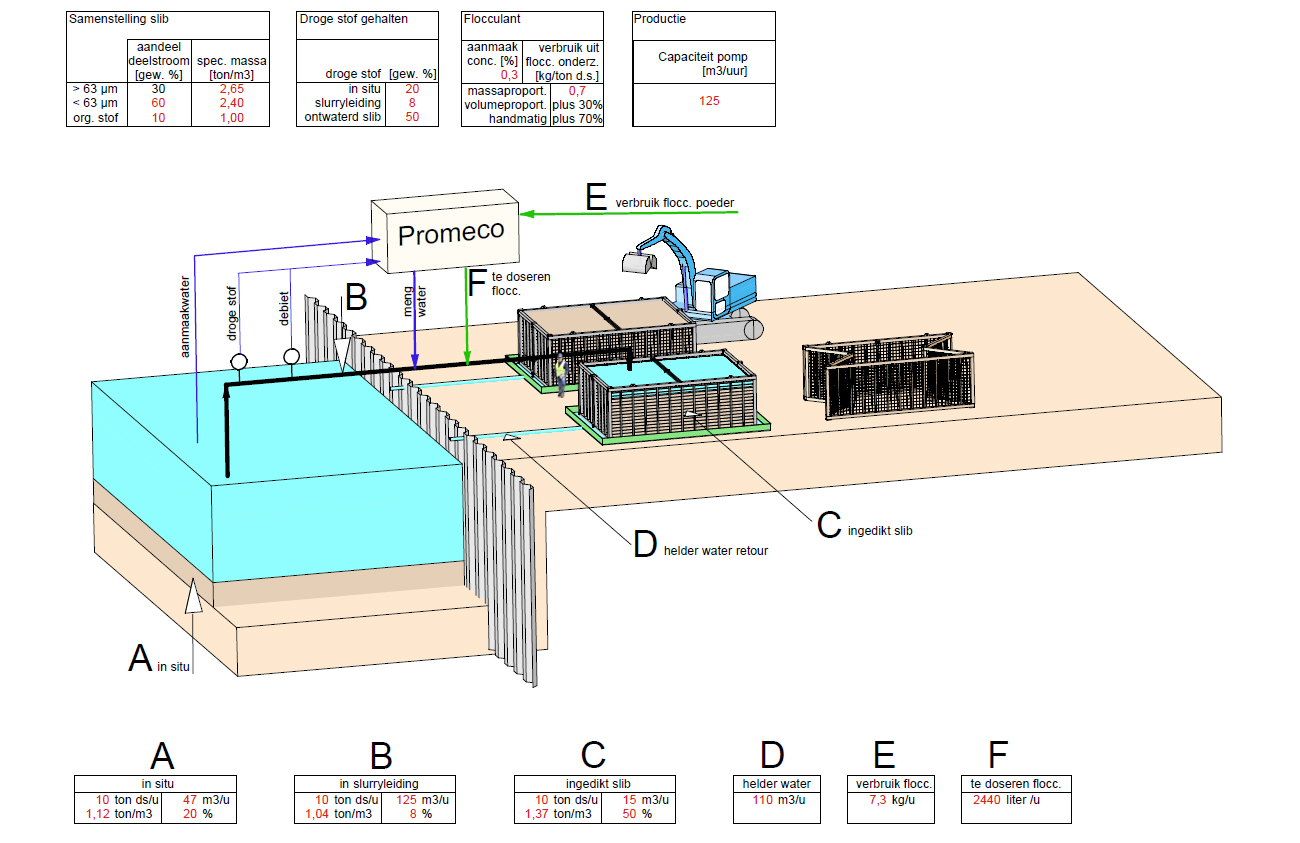Folding box
Continuing on from the Sludge Cylinder®, Promeco launched a new invention: the Folding Box. Purpose: large processing capacity for dewatering sludge on small surface areas as found in urban areas. The advantage of this innovation compared to the Sludge Cylinder®: the Folding Box can be quickly assembled and the once-only costs for assembly and disassembly are thus low. The capacity of the Folding Box is, however, somewhat less. You can always easily deploy the Folding Box, but you will always require more space than when you use the Sludge Cylinder®. The Folding Box is ideal for short-term projects. This innovation has emerged almost twenty years after Promeco pioneered the development of dewatering sludge with the help of geotextiles/dewatering containers.
Advantages of the Folding Box:
- In conventional geotextiles, you cut open the textile so that you can dispose of the sludge; the textile cannot be recycled. If you excavate the sludge from the Folding Box from above, you can infinitely recycle the textile. In other words: extremely cost-effective if you are able to deploy it on a regular basis.
- In addition: with the Folding Box, you dewater sludge on small surface areas as found in urban areas, for example in excavation pit. Conventional dewatering techniques require much more space.
You can view the process in the diagram; click on the diagram it to zoom in. Above in red fictional quantities; below what they would mean for our strength: the optimal dosage of flocculant.
Important: although overlapping applications exist, the Folding Box is not a direct competitor for the existing geotextiles: the new application is a supplement to the possibilities. The deployment of well-known geotextile dewatering tubes is, for example, a more logical option if the dewatering will take a long time.
The process
Promeco prepares these calculations (a so-called mass flow balance) beforehand for each project. This provides us with a good insight of the desired dewatering process. The data is used in the software that calculates the optimal dosing of flocculant during the entire project. In the short term, we provide you with the opportunity to calculate the mass flow balance yourself at this location by inputting the required data.
Our expertise enables us to work efficiently and effectively, allowing you to save on your investment. However, there are even more advantages: read more about these on the Sludge dewatering page.
What can we see on the illustration? The in-situ dredging spoil is pumped up by a dredging pump, a process in which a lot of excess water is included. The dredging spoil is pumped through a dredging pipe to the Folding Box. During the pumping, Promeco continuously measures the dry solids content and flow rate of the dredging spoil. In the processing computer, where the data for the mass flow balance has been entered, based on the measurements, it is continuously calculated how much flocculant we need to use for the dosing. This then takes place further along in the pipe, possibly adding a quantity of mixing water. A mixing device in the pipe then mixes the flocculant with the dredging spoil. Ultimately, dredging spoil dosed with flocculant ends up in the Folding Box, where the sludge particles will quickly settle. The geotextile acts as a filter for the sludge flocks, so that the released water is completely clear. This clear water is routed back to the original surface water.

